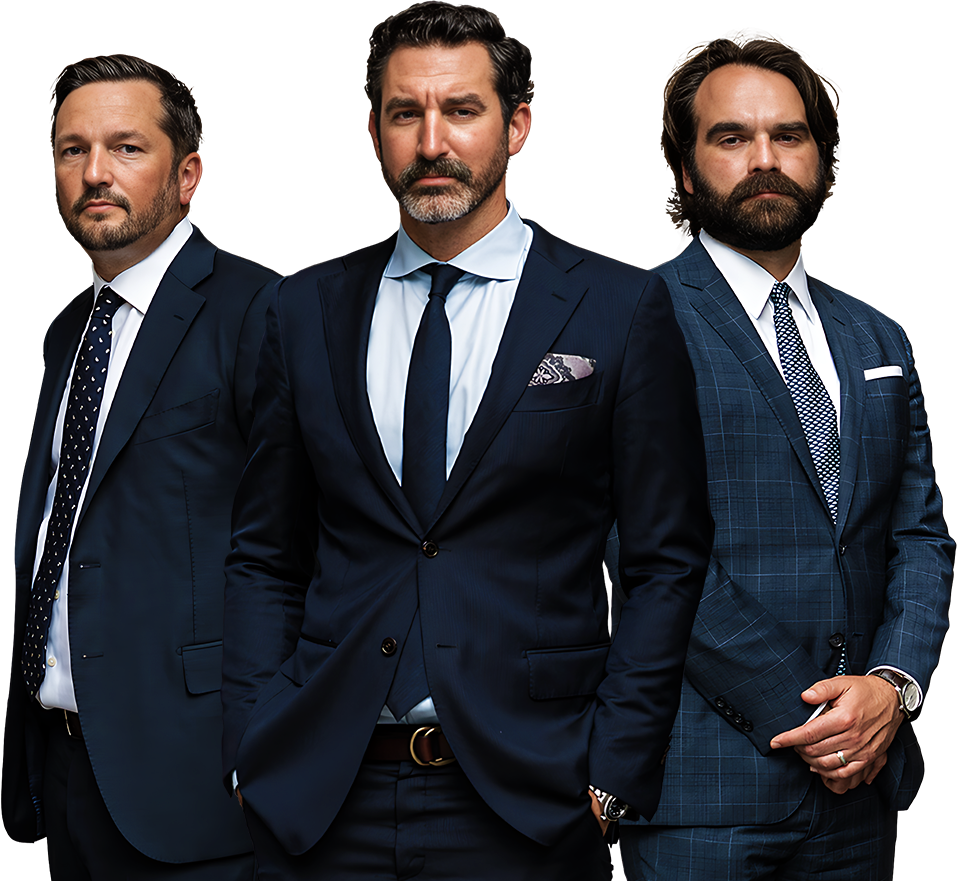Car Accident Fault Dispute: A Comprehensive Guide
A car accident can be a traumatic experience, and dealing with the aftermath can be stressful. If you’ve been in an accident that wasn’t your fault, you may be wondering what you can do to get compensation for your injuries and damages. One of the most important steps is to file a car accident fault dispute. Here’s a comprehensive guide to help you understand the process.
What is a Car Accident Fault Dispute?
When you file a car accident fault dispute, you are essentially arguing that the other driver was at fault for the accident. This means that you believe they were negligent in some way, and that their negligence caused your injuries and damages. Negligence can take many forms, such as driving under the influence of alcohol or drugs, speeding, or failing to yield the right of way. To prove negligence, you will need to gather evidence to support your claim.
Filing a car accident fault dispute can be a complex and time-consuming process. However, it is important to remember that you have the right to seek compensation for your injuries and damages if you were not at fault for the accident. An experienced car accident lawyer can help you gather evidence, file your claim, and negotiate with the insurance company on your behalf.
What Are Common Reasons for Disputing Fault in a Car Accident?
There are many reasons why drivers may dispute fault in a car accident. Some of the most common reasons include:
- The other driver was clearly at fault, but they are denying responsibility.
- The other driver’s insurance company is disputing liability.
- There is conflicting evidence about who was at fault.
If you are involved in a car accident, it is important to be aware of your rights and responsibilities. If you believe that the other driver was at fault, you should file a car accident fault dispute. An experienced car accident lawyer can help you get the compensation you deserve.
How to File a Car Accident Fault Dispute
The process for filing a car accident fault dispute will vary depending on the state in which you live. However, there are some general steps that you can follow:
- Gather evidence to support your claim. This may include things like a police report, witness statements, and medical records.
- Complete an auto accident report with your insurance company.
- File a claim with the other driver’s insurance company.
- Negotiate a settlement with the insurance company.
- File a lawsuit if you cannot reach a settlement with the insurance company.
Filing a car accident fault dispute can be a complex and time-consuming process, but you don’t have to do it alone. An experienced car accident lawyer can help you get the compensation you deserve.
Car Accident Fault Disputes
If you’ve been involved in a car accident, figuring out who’s at fault is crucial. The liable party’s insurance will cover the costs of damages and injuries. But determining fault can be a contentious process, especially when both drivers claim innocence. Navigating a car accident fault dispute requires understanding the concept of fault, the legal framework, and the strategies for proving your case.
Understanding Fault in a Car Accident
Establishing fault in a car accident hinges on identifying the party whose negligence or carelessness caused the crash. Negligence is the failure to exercise reasonable care, and it can manifest in various forms, such as speeding, running a red light, or driving under the influence of alcohol or drugs.
Proving Fault in a Car Accident
To prove fault in a car accident, you must gather evidence to support your claim. This evidence may include police reports, witness statements, photos of the accident scene, and medical records. The police report is a crucial document that provides an official account of the accident and often includes the officer’s opinion on fault. Witness statements can corroborate your version of events and provide additional details that may not be captured in the police report.
Taking photos of the accident scene immediately after the crash is also essential. These photos can document the damage to vehicles, skid marks, and other relevant details. Medical records are necessary to establish the extent of your injuries and link them to the accident. Additionally, if there were any traffic cameras or surveillance cameras nearby, obtaining footage from those sources can provide valuable visual evidence.
Strategies for Proving Fault
To strengthen your case and prove fault, consider seeking legal advice from an experienced attorney who specializes in car accident law. They can guide you through the legal process, help you gather evidence, and represent you in negotiations with the insurance company or in court.
Don’t hesitate to contact your insurance company promptly after the accident. They can initiate the claims process and provide assistance in documenting the accident and gathering evidence. It’s also important to cooperate with the insurance company’s investigation and provide them with accurate and complete information.
Common Defenses in Car Accident Fault Disputes
In some cases, the at-fault driver may attempt to defend their actions by claiming contributory negligence or comparative fault. Contributory negligence bars the plaintiff from recovering any damages if they were partially at fault for the accident. Comparative fault, on the other hand, reduces the plaintiff’s damages in proportion to their degree of fault.
It’s crucial to anticipate these potential defenses and prepare counterarguments. If the other driver alleges that you were speeding, for instance, you can provide evidence to demonstrate that you were traveling within the speed limit. Similarly, if they claim you ran a red light, you can present witness statements or traffic camera footage to prove otherwise.
Car Accident Fault Dispute
Traffic accidents can be exasperating and all the more so when it comes to determining fault. It’s not uncommon for drivers involved in a fender bender to have differing accounts of what transpired, leading to disputes over who is to blame. These disputes can delay insurance claims and even end up in court. Know your rights and the steps to take in the event of an accident dispute.
Proving Fault
To establish fault in a car accident, one must present evidence that supports their claim. This evidence may take various forms, including witness statements, police reports, and expert testimony. Witness statements can provide valuable firsthand accounts of the accident, while police reports document the responding officer’s observations and findings. Expert testimony from accident reconstructionists or other qualified professionals can offer technical analysis and insights into the cause of the crash.
Witness statements should be obtained promptly following the accident, as memories can fade over time. When speaking to witnesses, ask open-ended questions and avoid leading them. Note their names, contact information, and a detailed account of their observations. Police reports are typically filed at the scene of the accident and can be requested from the responding agency.
In complex cases, expert testimony may be necessary to determine fault. Accident reconstructionists can use evidence from the scene, such as skid marks and vehicle damage, to recreate the events leading up to the crash. Other experts, such as medical professionals, can provide testimony on the nature and extent of injuries sustained. These experts can help clarify technical issues and assist the court or insurance company in understanding the cause of the accident.
Car Accident Fault Disputes: Navigating the Legal Labyrinth
When a car accident occurs, determining fault can be a contentious issue. Drivers involved may have conflicting accounts of what happened, leading to disputes over responsibility. In such cases, understanding the legal defenses commonly raised against fault can provide valuable guidance.
Common Defenses Against Fault
Comparative Negligence
One of the most common defenses against fault is comparative negligence. This defense argues that the plaintiff, while injured, also contributed to the accident due to their own negligence. In states that adopt this doctrine, the plaintiff’s recovery is reduced in proportion to their degree of fault.
Contributory Negligence
A more stringent defense than comparative negligence is contributory negligence. This defense states that if the plaintiff’s negligence in any way contributed to the accident, they are barred from recovering any damages. Contributory negligence can be a challenging defense to overcome for plaintiffs.
Sudden Emergency
The sudden emergency defense is raised when a defendant asserts that they were faced with an unexpected and sudden emergency situation that made it impossible for them to avoid the accident. This defense often hinges on factors such as the severity of the emergency, the time available to react, and the reasonableness of the defendant’s actions.
Assumption of Risk
In some cases, defendants may argue that the plaintiff assumed the risk of the accident by engaging in a reckless or dangerous activity. For instance, if a plaintiff was speeding excessively, the defendant could claim that the plaintiff voluntarily assumed the risk of an accident.
Statute of Limitations
Another important consideration in car accident fault disputes is the statute of limitations. This is the legal deadline by which a lawsuit must be filed. If a plaintiff fails to file their lawsuit within the statute of limitations, they may lose their right to recover damages.
Determining Fault in Car Accident Disputes
Picture this: you’re behind the wheel, enjoying a nice drive, when suddenly, boom! Another car plows into yours. Now you’re not just a driver, but a claimant in a car accident fault dispute. Figuring out who’s to blame can be like untangling a knot of spaghetti – especially when both drivers are pointing fingers at each other. So, how do you figure out who’s at fault and get yourself compensated for those costly repairs, medical bills, and pain and suffering?
Documenting the Scene
After a car accident, your first instinct might be to yell at the other driver or check for injuries. But before emotions run high, take a deep breath and start gathering evidence. Snap pictures of the damage to both vehicles, the surrounding area, and any visible injuries. Get contact information from witnesses, and jot down notes about the accident, including the time, date, and location. This documentation will be crucial when determining fault.
Reporting the Accident
As soon as possible after the accident, file a police report. The police will investigate the scene, take statements from witnesses, and write a report that can be used to determine fault. It’s important to be accurate and detailed in your report, as it will be a key piece of evidence in your case.
Negotiating and Resolving Disputes
Negotiations can be a viable option to reach a settlement outside of court, saving you time and money. You and the other driver can discuss the accident, exchange information, and try to come to an agreement on who’s at fault and how the damages will be covered. If you can’t reach an agreement, you can consider mediation or arbitration, which are alternative dispute resolution methods that involve a neutral third party to help you resolve your dispute.
Filing a Lawsuit
If you can’t resolve your dispute through negotiations or alternative dispute resolution, you may need to file a lawsuit. This is a more formal process that involves filing a complaint with the court and going through a trial. While this option can be more costly and time-consuming, it may be necessary to get the compensation you deserve.
Insurance Companies and Fault Determination
Insurance companies play a significant role in determining fault in car accident disputes. They will investigate the accident, review the evidence, and make a decision on who’s at fault. This decision will impact the amount of compensation you receive, so it’s important to work with your insurance company to ensure they have all the necessary information to make an accurate assessment.
Car Accident Fault Dispute: Resolving Blame and Liability
Determining fault in a car accident can be a complex and contentious process. When there is a dispute over who is to blame, it can further complicate matters and make it challenging to seek compensation for damages.
Negotiating with Insurance Companies
In many cases, the first step after a car accident is to negotiate with the insurance companies involved. Each insurance company will typically have its own view of the accident and may assign fault differently. Skilled negotiators can present a compelling case for their client, supporting their position with evidence and legal arguments.
Mediation and Arbitration
If negotiations with insurance companies reach a stalemate, mediation or arbitration may provide a path to resolution. Mediation involves a neutral third party, known as a mediator, who facilitates a discussion between the disputing parties. Arbitration, on the other hand, involves a panel of arbitrators who hear evidence and make a binding decision.
Independent Investigations
In some cases, an independent investigation may be necessary to gather additional evidence and determine fault. This could involve hiring an accident reconstruction expert to analyze the crash scene and provide an unbiased opinion. The findings of an independent investigation can be instrumental in supporting a claim or rebutting the opposing party’s arguments.
Filing a Lawsuit
If all other options fail, filing a lawsuit may be necessary to seek legal recourse and compensation for damages. This is a more adversarial process that involves the involvement of attorneys and the court system. However, it can also lead to a more comprehensive resolution and the potential for a larger financial recovery.
Preparing for a Lawsuit
Preparing for a lawsuit requires meticulous preparation and a thorough understanding of the legal process. It is crucial to gather all relevant evidence, such as police reports, medical records, witness statements, and photographs. An experienced car accident attorney can guide you through the lawsuit process, protect your rights, and maximize your chances of a successful outcome.
Determining fault in a car accident dispute can be a daunting task, but by understanding the available options and seeking professional guidance, you can navigate this complex process effectively and seek just compensation for your damages.
Car Accident Fault Disputes: Navigating the Maze of Responsibility
When two drivers collide, determining fault is often a complex and contentious matter. If you find yourself embroiled in a car accident fault dispute, it’s imperative to approach the situation with a clear understanding of your rights and responsibilities. Here’s a comprehensive guide to navigating this challenging process:
Tips for Dealing with a Fault Dispute
Document the Scene
After an accident, time is of the essence. Quickly capture as much information as possible, including the exact location, date, and time of the crash. Take photos of the vehicles, road conditions, and any visible injuries. This documentation will serve as valuable evidence when filing a claim.
Gather Evidence
In addition to documenting the accident scene, gather any other available evidence that supports your claim. This includes witness statements, police reports, medical records, and insurance information. The more evidence you possess, the stronger your case will be.
Seek Medical Attention Promptly
Your health should always be your primary concern. Seek medical attention immediately after an accident, regardless of the severity of your injuries. This not only ensures you receive proper treatment but also provides medical documentation that can support your claim for damages.
Understand the Legal Process
Familiarize yourself with the legal process involved in resolving fault disputes. In most cases, filing an insurance claim is the first step. You will need to provide evidence of your injuries and damages, as well as proof of the other driver’s negligence.
Seek Professional Guidance
If you’re unable to resolve the fault dispute on your own, consider seeking professional guidance. An experienced personal injury attorney can assess your case, negotiate with the insurance companies, and represent your interests in court, if necessary.
Conclusion
Car accident fault disputes can be stressful and financially draining experiences. However, by following these tips, you can strengthen your claim and improve your chances of a favorable outcome. Remember, documenting the accident, gathering evidence, and seeking professional guidance are crucial steps in navigating the complex maze of fault determination.




Leave a Reply